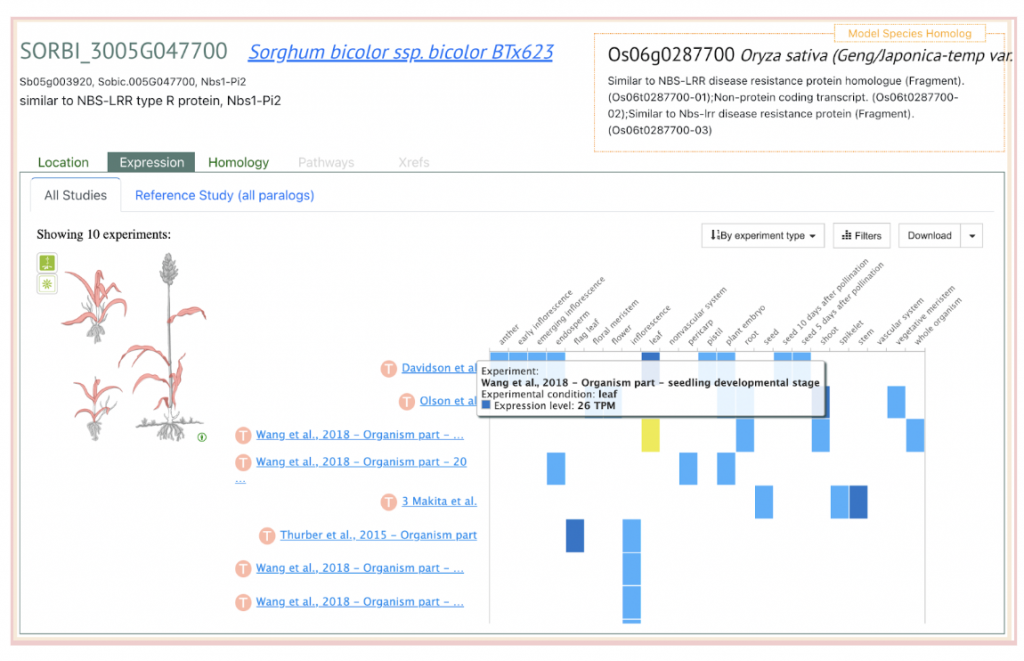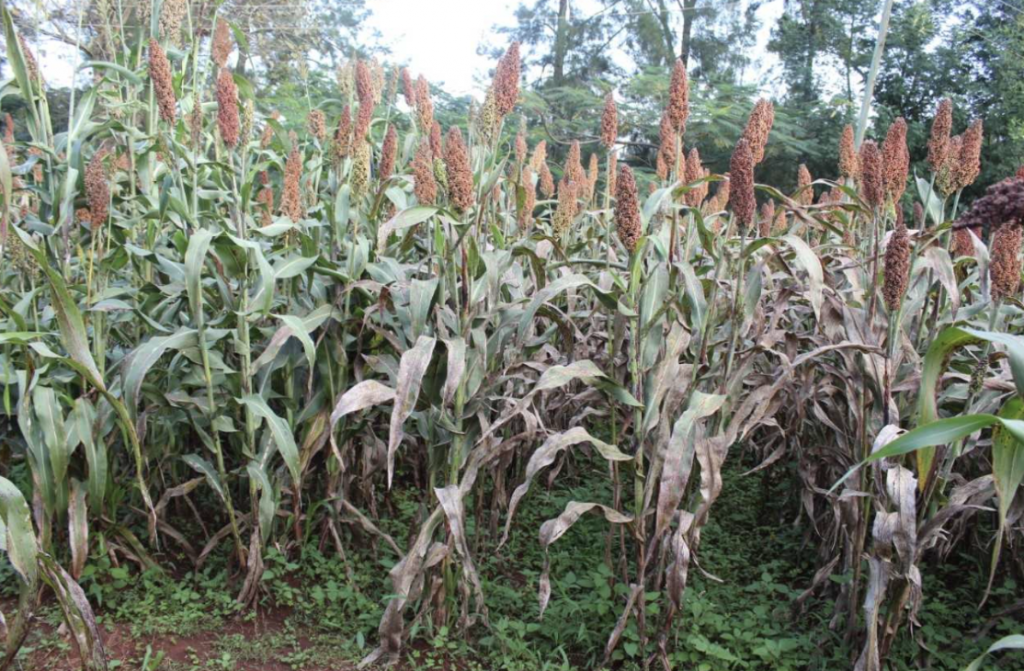ANTHRACNOSE RESISTANCE GENE 2 Imparts Fungal Resistance Without Negatively Affecting Plant Growth
Anthracnose diseases caused by the fungus Colletotrichum sublineola (Cs) greatly impacts the productivity of sorghum. There are known sorghum lines that are resistant to an infection however, the underlying molecular genetics is not well understood. In an effort to find sorghum anthracnose resistance genes and pinpoint their function scientists from Purdue University and crossed SC328C, a sorghum line resistant to Cs strains Csgl1 and Csgrg, and TAM428, a Cs susceptible sorghum line. Using genetic mapping and sequence comparisons, Mewa et al. identified a single ANTHRACNOSE RESISTANCE GENE 2 (ARG2) in SC328C, which encodes a nucleotide-binding leucine-rich repeat (NLR) protein that produces resistance to certain Cs strains. NLRs institute effector trigger immunity (ETI), which is a precise and effective form of immunity that is hypersensitive. The gene identification was substantiated by investigating sorghum lines with dominant and recessive ARG2 alleles and confirming the hypothesized resistance/ susceptibility to Cs strains. The authors note that the resistance conferred by ARG2 is maintained up to 38°C. Of particular importance is the fact that the sorghum plants carrying the ARG2 allele grew better than those without the allele. This contrasts with the fact that it is known that resistance genes typically negatively affect growth and makes ARG2 a good candidate for introgression within the sorghum population.
Identification of genes such as ARG2 that confer strong resistance to fungal pathogens will be useful on their own or stacked with other resistance genes. Resistance genes that remain functional at higher temperature are particularly useful in the face of changes in climate variables. – Mengiste
SorghumBase examples:


Reference:
Mewa DB, Lee S, Liao CJ, Adeyanju A, Helm M, Lisch D, Mengiste T. ANTHRACNOSE RESISTANCE GENE2 confers fungal resistance in sorghum. Plant J. 2022 Nov 28. PMID: 36441009. DOI: 10.1111/tpj.16048. Read more
Related Project Websites:
Mengiste Lab at Purdue University: https://ag.purdue.edu/department/btny/labs/mengiste/index.html


